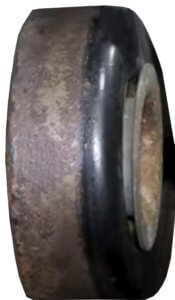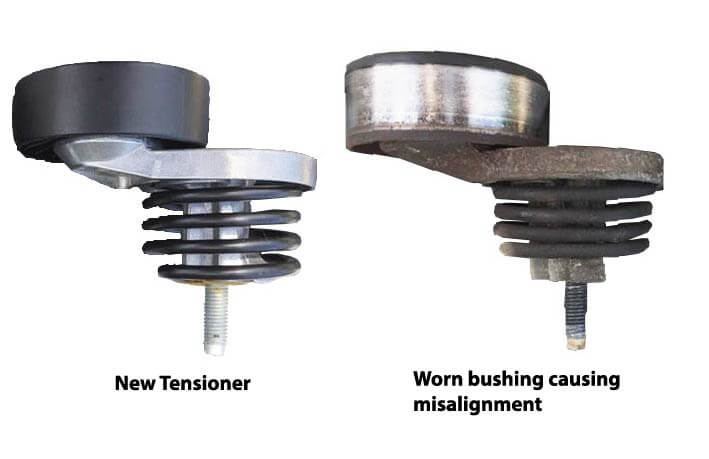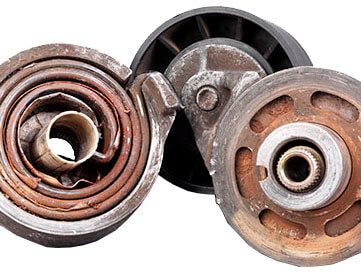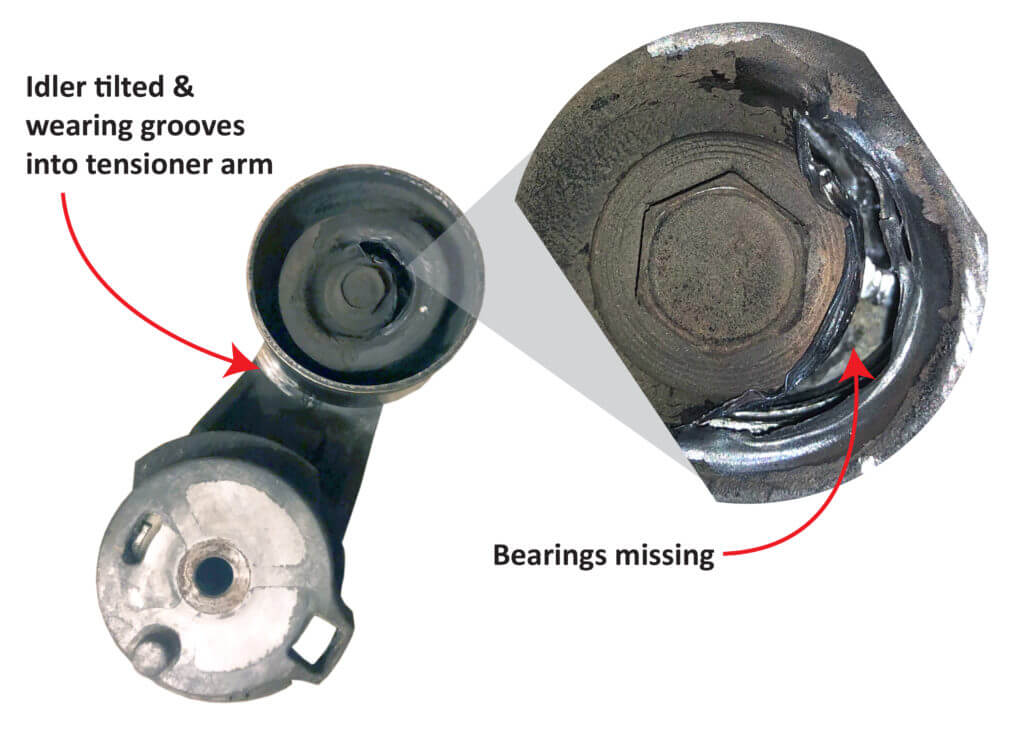What causes a serpentine belt break or one that keeps breaking?
Learn the most common causes of a serpentine belt break or one that keeps breaking
If you’ve had a serpentine belt break and it’s not due to normal wear and tear, here are the most common causes.
A Worn Belt Tensioner can cause a serpentine belt to keep breaking
The belt tensioner is designed to keep the proper tension on the belt while also dampening the power pulses produced by the engine. As a tensioner wears out, it loses its ability to dampen the power pulses, causing the belt to stretch/release repeatedly, and that can weaken the cords in the belt, causing a serpentine belt to keep breaking.
In addition, if the spring in the tensioner wears, it won’t apply the correct pressure and that can cause accelerated belt wear that can cause repeat serpentine belt breaks.
Stuck or worn idler pulleys
An idle pulley or water pump pulley that has worn or partially seized bearings will cause the belt to drag across those pulleys and wear the belt in an accelerated fashion, causing a serpentine belt break. If you replace the belt but don’t fix the root cause, it will keep breaking.
Misalignment
Pulley misalignment can cause the belt edges to rub against engine components and fray the edge of the belt. That will degrade the belt’s internal reinforcement cords. Mechanics should periodically inspect pulley alignment and use tools like laser guides to check for and correct any issues.
Worn rotating components
The bearing in the water pump, alternator, power steering pump, secondary air pump, and AC compressor can cause the pulleys on those components to drag or even seize and cause a serpentine belt break. If you don’t find and fix the component causing the drag and just replace the belt, it will break again.
Oil Contamination
Engine oil that gets flung off rotating parts can sometimes land on the belt. Oil causes the rubber to soften and swell, leading to cracking and chunking of the belt material. Leaking fluids like power steering, coolant, or a/c refrigerant can also contaminate and degrade the belt over time. Identifying and fixing any fluid leaks is important.

These belts were destroyed by leaking engine oil or coolant.

The worn idler bearing causes the idler to wobble and move the belt out of alignment with the rest of the pulleys, causing edge fraying
Rusted or worn idler face
The rusted surface causes accelerated wear on the belt ribs or backside of the belt, resulting in premature failure.
Debris Buildup
Belts often get coated in fine debris like dirt and road dust. If this debris gets wet or oily, it can form an abrasive paste that wears down the rubber. Larger items like pebbles or sticks can get lodged in the pulley grooves and damage the belt. Periodic cleaning and inspection for debris can prolong belt life.
Improper tension can cause a serpentine belt to break
Excessive tension causes the belt to run hot and fail
Low tension causes the belt to slip across the pulleys and wear out the multiple “V’s” to the point where the belt is riding only on its backing.

This illustration shows how rib wear can cause the belt to lose gripping power. The belt’s only contact with the pulley is at the bottom of the rib valley. It simply loses its ability to wedge into the pulley “V”. So the belt slips, chirps, squeals and the driven component loses efficiency.
Improper alignment can cause a serpentine belt to break
The most common cause of belt misalignment is a worn bushing in the automatic belt tensioner. This causes the serpentine belt to run to the side of the pulleys, resulting in edge fraying and rapid wear.

Extreme Conditions
Operating a vehicle in very hot, cold, or wet environments can be taxing on the serpentine belt. Temperature extremes make rubber less pliable and more vulnerable to cracking. Prolonged moisture exposure also degrades the belt compounds. Vehicles used in these conditions require more frequent belt inspection and replacement.
By being aware of these common factors that affect serpentine belt life, drivers and technicians can help prevent premature failures. With proper installation, maintenance, and operating conditions, serpentine belts can reliably power the vital engine accessories that keep a vehicle on the road. But neglecting belt care will likely lead to being stranded with a broken accessory drive belt.
Posted on by Rick Muscoplat

